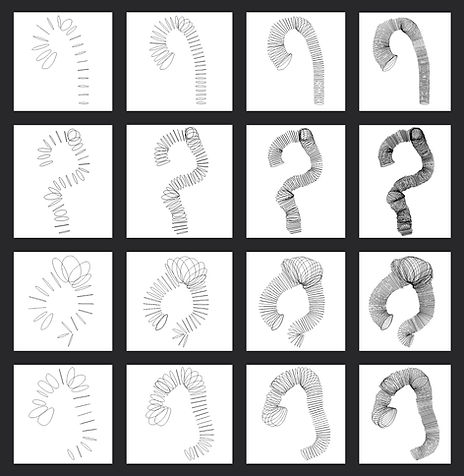
Repeatability of Blood-Brain Barrier Diffusion Weighted Arterial Spin Labeling MRI Sequences
Abnormal blood-brain barrier (BBB) water exchange rate (Kw) has the potential to be a novel biomarker for neurological disorders. However, additional studies are needed to affirm the reliability of MRI sequences that assess Kw. Therefore, the purpose of this project is to assess the reliability of a relatively novel BBB arterial spin labeling MRI sequence and explore how robust the Kw signal fitting protocol is to different levels of added random white Gaussian noise.
Assessment of Blood-Brain Barrier Water Exchange Rate in the Schizophrenic and Aging Brain
The study purpose is to assess the water transfer rate in different regions of the schizophrenic brain and correlate this metric to peripheral and central markers of inflammation. The goal is to elucidate the biological mechanisms behind schizophrenia and explore opportunities to develop a novel biomarker for the disease.
Alternatively, there has been growing interest in the use of quantitative blood-brain barrier imaging as a marker for the functional status of the glymphatic system, the brain's primary waste clearance system. Thus, the secondary purpose is to characterize changes in blood-brain barrier water exchange rates in different regions of the aging brain.


Comparison of Choroid Plexus Perfusion with Multi-Delay Arterial Spin Labeling MRI to Simultaneous 15O-Water PET
The recent discovery of the glymphatic system, the brain’s primary waste clearance complex, has led to growing interest in noninvasive methods to estimate choroid plexus perfusion, a metric that could be clinically useful in disorders with abnormal protein accumulation, such as Alzheimer’s Disease. Thus, the purpose of this study is to compare choroid perfusion measurements assessed with noninvasive and nonionizing multi-delay arterial spin labeling MRI to those obtained by 15O-water PET, the current gold standard for assessing cerebral perfusion.
Optimization of Three-Dimensional Modeling for Geometric Precision and Efficiency for Healthy and Diseased Aortas
The study purpose is to optimize modeling parameters, specifically segmentation spacing and centerline extraction, to efficiently construct accurate 3D aortic models. Models are constructed by centerline extraction and orthogonal 2D segmentations. We examine the effect of segmentation interval spacing (2, 1, 0.5, 0.25 cm) and orthogonal segmentation and centerline extraction iteration (one, two, three iterations) for constructing models of Healthy, Tortuous, Aneurysmal, and Dissected human thoracic aortas. We found that depending on the geometric characteristics and complexity of anatomy and pathology, different levels of segmentation interval refinement and iterations of segmentation and centerline extraction are required.


Multiple-Choice Question Bank Analogue for Preclinical Medical Students
The purpose of this project is to create a multiple-choice question bank analogue for preclinical medical students that more accurately simulates the digital charting aspects of the clinical years. The innovation is a new exam model that teaches writing while testing clinical concepts to facilitate learning the language of medicine. I am currently looking to prototype the idea so please reach out if you think you are interested in collaborating. Advanced experience with artificial intelligence is preferred. The link to the executive summary is below.
Last Updated: 5/2025



